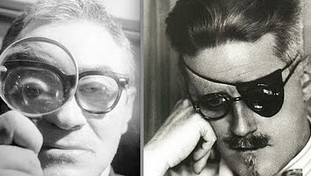Joyce the inverted nationalist

In 1944 the New York Times commissioned then widely read novelist James T. Farrell--an "ethnic proletarian" novelist who came of age in the radical context of the Depression, author of Studs Lonigan etc.--to make a commentary on James Joyce. Farrell wrote about his main topic: being Irish in the Irish diaspora. Below is the first paragraph of the essay Farrell wrote for the December 31, 1944 Times and here is a link to the whole piece.
This race and this country and this life produced me," declares Stephen Dedalus--artistic image of James Joyce himself--in "A Portrait of the Artist as a Young Man." "A Portrait" is the story of how Stephen was produced, how he rejected that which produced him, how he discovered that his destiny was to become a lonely one of artistic creation. It is well to look into the life out of which Stephen came, to discuss the social and national background of this novel. In Ireland a major premise of any discussion of her culture and of her literature is an understanding of Irish nationalism. And it is at least arguable that Joyce was a kind of inverted nationalist--that the nationalism which he rejects runs through him like a central thread.